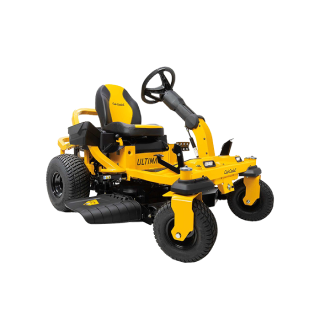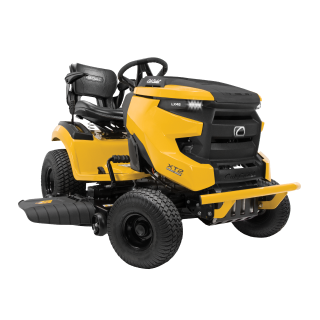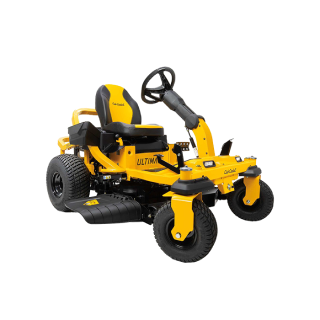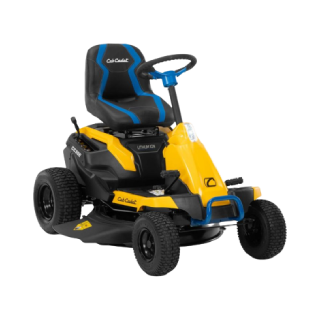Frequently Asked Questions
Explore our comprehensive FAQs on lawn mowers, mower parts, product tips, maintenance, & more. Contact us for any unanswered questions or visit a local dealer.
Does Cub Cadet sell direct to the public?
The Cub Cadet range is available exclusively through our extensive dealer network.
You can find your nearest Cub Cadet dealer here
To get in touch with a local Cub Cadet dealer who can provide you with the right advice, products, parts and service, please utilise our interactive dealer locator.
How can I contact Cub Cadet in New Zealand?
If you would like to get in touch with Cub Cadet NZ, you can do so by visiting our Contact page and submitting an enquiry form, alternatively you can contact our Customer Service team on 06 350 1350
How do I buy Cub Cadet Spare Parts?
For a full range of Parts and Accessories, contact your local Cub Cadet dealer.
Why should I run my engine at full rpm?
Running an air-cooled engine at its highest RPM is essential for the following reasons:
A) Optimal Cooling and Lubrication: The engine’s cooling and lubrication systems function best when the throttle control is set to the highest position. Operating the engine at lower speeds reduces the flow of cooling air and the volume of circulated oil. These factors can significantly shorten the engine’s lifespan.
B) Clean and Efficient Operation: The engine’s carburettor is precisely adjusted to ensure the cleanest and most efficient operation at full throttle. Running the engine below or outside its recommended speed range results in reduced power output.
C) Proper Functioning of Driven Components: All components driven by the engine, such as the cutting deck, are designed to operate at the speed maintained by the engine’s governor when the throttle is at its highest position. Running the engine at lower speeds leads to decreased performance, increased vibration, and accelerated wear on various drive components, including the cutting deck drive belt.
D) Battery Recharge Rate: Models equipped with engines featuring DC electric starters and battery systems rely on the engine running at full RPM for optimal battery recharge. These engines have stators that generate electrical current to recharge the battery circuit, but this only occurs when the engine is properly tuned and operated at full RPM. Instances of poor battery recharging are often attributed to customers who do not keep the throttle at full. In self-propelled units like tractors, it is important to maintain full throttle whenever possible and adjust ground speed using lower gears or the ground speed control. Using the engine throttle to regulate ground speed can result in insufficient electrical current for proper battery maintenance.
Why do I experience clumping, clogging, or poor mulching when using my grass collector or mulching feature?
There are several factors that can contribute to clumping, clogging, or ineffective mulching. While some of these issues may be related to the condition and type of cutting blade used, most of them are operational in nature. Please review the following points to improve cutting performance and the disposition of grass clippings:
- Clean the Deck: Ensure that the underside of your deck is thoroughly cleaned from any debris or clippings. A clean cutting deck allows for optimal airflow beneath and out from under the deck, which is crucial for proper discharge or mulching of clippings.
- Engine at Full Throttle: It is necessary to operate your unit at full throttle throughout the entire mowing process. Insufficient engine RPM and reduced blade rotational speed can hinder the airflow underneath the cutting deck.
- Avoid Mowing Wet Grass: Clumping can occur when mowing excessively wet grass. Try to mow only when your lawn is dry. Note that even if the grass appears dry, recent rain or damp conditions can still leave the grass moist. If the mower wheels become visibly damp or wet while mowing, the grass is too wet for proper clipping movement. Allow sufficient drying time before mowing under such conditions.
- Avoid Cutting Off Too Much Grass: Poor grass clipping movement can happen when cutting off an excessive amount of grass. Avoid bagging or mulching when cutting more than 2 inches of the overall grass blade length. Overloading or “clogging” may occur if too much grass is forced through the discharge opening. If the lawn has grown beyond the normal cutting length, it may be necessary to make multiple mowing passes, starting at a higher cutting height and gradually lowering the deck with each pass until the grass is back to a normal height.
- Control Ground Speed: Operating at a high ground speed can hinder the proper discharge of clippings through the grass collector chute. Maintain a medium to slow pace, either by walking slower or reducing the tractor speed, especially when bagging or mulching.
- Check Blade Sharpness: Dull blades can contribute to these issues. Make sure your cutting blades are sharpened and balanced regularly to ensure maximum airflow. Inspect, sharpen, and balance the blades as needed.
- Consider High-Lift Blades: In certain grass types or bagging conditions, “High-Lift” design cutting blades may be necessary. These blades are designed to provide maximum ejection airflow through the deck discharge opening, ensuring complete removal of clippings. Larger cutting decks typically handle more clippings, requiring increased exit airflow to prevent clumping.
By addressing these factors, you can improve the performance of your grass collector or mulching function and achieve better results with your lawn care.
Why is there an uncut strip of grass left when using my riding mower?
In most cases, this issue can be resolved by adjusting the deck levelling. Refer to the adjustments section of the product operator’s manual for instructions on how to perform the deck levelling adjustment.
Additionally, the deck wheels and the tyres on the tractor itself can affect the operation. The deck wheels should not ride on the ground when traversing level terrain. If the tractor is on a flat surface, the deck wheels should be approximately 6mm (1/4″) off the ground when the deck is in the normal cutting position.
Ensure that all tractor tyres are properly inflated according to the recommended pressure settings. Typically, rear tyres should be inflated to around 10 psi, while front tyres should be around 14 psi. It’s important to note that while the tyres may have the same pressure and style, variations in tyre composition and wear may result in tyres with different heights when inflated to the same pressure. You may need to measure the actual inflated tyre height to detect subtle differences.
If the problem persists, it could be due to worn or unbalanced blades and/or spindles. Another possibility is that the deck hangers on the tractor may be bent or damaged.
Lastly, it’s possible that the operator is attempting to cut grass that is too long for the mower to handle. Typically, a lawn is considered to have grass approximately 10cm (4″) to 15cm (6″) in length. In heavy conditions, it may be necessary to go over the cut area a second time for a clean cut.
However, it’s important to note that the mower is NOT designed to mow heavy brush, weeds, or extremely tall grass. Its intended use is for mowing lawns, NOT for clearing brush.
*Deck wheels, which are narrow and bolted to some cutting decks, provide smooth rolling over uneven terrain. Larger decks (46” plus) may have wider deck rollers. These deck rollers can be operated either hanging or in constant contact with the ground.
Warranty Frequently Asked Questions
How can I find out if I registered my equipment and how long I have left on the warranty? When does the warranty start?
Warranty period begins on the date of purchase or date of receiving product delivery. Please refer to the warranty statement provided with your products. The warranty period and exclusions are provided.
Is registration required for Warranty?
Registration is not a requirement for warranty. We encourage product registration as there will be a record of the date of purchase, original owner, and product information.
Do I need my purchase receipt?
Yes, the purchase receipt indicates date of purchase which is the start date of the warranty period. Delivered products the date of delivery is the start date of the warranty period.
I want to see what kind of warranty my lawn mower has, where can I find this?
The warranty statement is with the owner’s manual packet.
What does the zero-turn lawn mower warranty include?
Coverage period and exception details are included in the warranty statement located with the product owner’s manuals.
How do I know if the problem with my equipment meets warranty coverage?
Product issues and or problems are determined and evaluated by a local authorised service dealer. The service dealer will evaluate the problem and determine if the problem meets a warrantable failure. Please contact your local delaer.
Do you offer an extended warraty?
No sorry, this is not currently offered in New Zealand.
Is a warranty transferrable?
Factory warranties are not transferrable.
What circumstances void the warranty?
Depending on the product and circumstances, there are a number of scenarios that can void a warranty. These circumstances include, but are not limited to, the following:
- Lack of maintenance and/or improper maintenance as described in the operator’s manual;
- Normal wear and tear resulting from use of the product
- Use of the product that is not consistent with the intended use as described in the operating instructions, including, but not limited to, abuse, misuse, and/or neglect of the product, or any use inconsistent with and/or non-compliant with the instructions contained in the Operator’s Manual. This included operation in sandy and/or corrosive environments; or
- Any product that has been altered or modified in a manner not approved.
Is pickup and delivery covered by the warranty?
Pick up and delivery are not covered by the warranty.
Are there any charges for warranty repairs and services?
There are no charges for any warranty service provided, as long as it meets the criteria.
Is the warranty a guarantee that all failures be free of charge?
Warranty period and coverage are not guarantees that all failures or issues that occur during the warranty period be free of charge.
Are fuel-related failures covered by warranty?
Fuel related failures are not covered by the warranty.
What are normal wear parts?
Normal wear parts include, but are not limited to, the following: belts, blades, blade adapters, grass bags, rider deck wheels, seats, shave plates, skid shoes, tines, filter, nozzles, hoses, O-rings, spray guns, wands, tires, spart plugs, fuses, bump knobs, outer spools, cutting line, inner belts, start pulley, starter rope, drive belts, saw chains, guide bars, batteries, and other consumable items.
Can I return my equipment to Steelfort?
The recommendation is to not to return any equipment to Steelfort. Contact a local authorised dealer for product evaluation, service, and repairs.
By calling and speaking with an authorised dealer about equipment issues, is there a guarantee that a failure or failures meet warranty coverage?
There is no guarantee that speaking with a representative will result in warranty coverage. Warranty coverage can only be determined by a local authorised service provider evaluating the failure and cause. Representatives can provide information and options; however representatives cannot determine if a failure or similar meet warranty coverage.
What do I do if an authorised service dealer is refusing to evaluate my equipment?
During the busier or seasonal times of year often it may take longer for an evaluation of the product. Another option may be to check with other authorised service providers in your area.
I purchased a returned product, is there waranty?
No. Warranty extends to the initial purchaser only and the applicable warranty period will begin on the original date of purchase of the product or product delivery date.
STILL NEED
MORE
INFORMATION
Newsletter Sign Up
Don’t miss exclusive offers, new releases and product tips in our Newsletter




